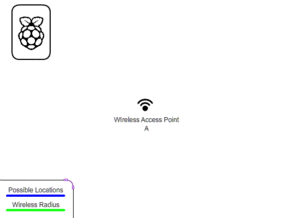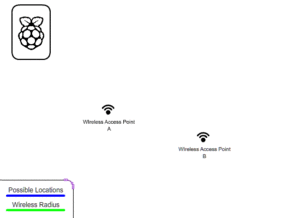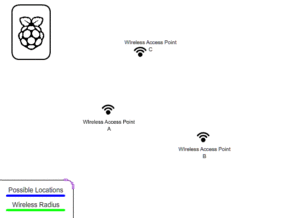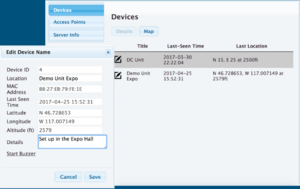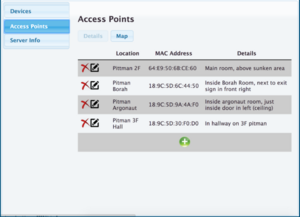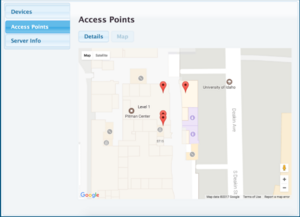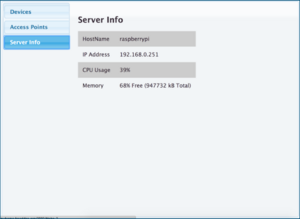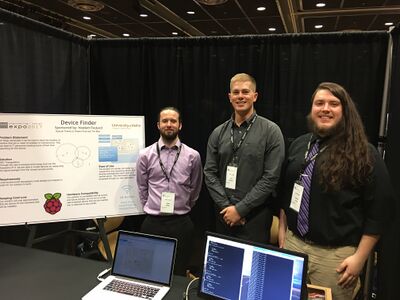Device Finder
| Sponsors | |
| Team Members | |
| Duration | Fall 2016 - Spring 2017 |
| Faculty Advisers | Greg Donohoe |
Finding HP Printers in a corporate environment
Background
Problem Statement
In September 2016, HP posed a problem for us to solve: that in a large corporate setting, IT was having a hard time keeping track of all the printers that they had to manage on large campuses. In large companies, sometimes printers get moved to different buildings, different offices, or they just die; and IT isn't made aware of any changes. This can pose problems when IT is tasked with finding these printers. Our goal is to create a method of finding these printers, to reduce these problems.
Design
Initial Design
We determined that the best course of action, in order to find printers successfully, was to design and attach a device to the printers, which uses some method of location-determining and reporting back to a central server their location, at intervals. Even if printers go offline, this will allow users to be able to see the last known location of the printer.
Metrics
Location Services
| Accuracy Inside Buildings | Overall Accuracy | Implementation Cost | Ease of Implementation* | |
| GPS | Low | 3.5m | $30 | 3 |
| Cellular Triangulation | Med-Low | 50m | $30 | 2 |
| Network Topography | Very Low | N/A | $0 | 4 |
| Wifi Triangulation | High | 0.4 - 6m | $0 | 3 |
*Since the most promising devices have wifi, we left this as a $0 additional cost
Device Features
| Cost/Device | Architecture | Wifi | Ethernet | Community Support | |
| Raspberry Pi 3 | $35.00 | ARM | Yes | Yes | Broad Range Application |
| Orange Pi | $20.00 | ARM | Yes | Yes | None |
| Intel Edison | $46.23 | x86 | Yes | No | Professional Applications and Growing Community |
Wifi Triangulation
We will be using various methods to derive the distance of our device from each access point in its vicinity, and from that, we can use triangulation to narrow its location down.
| This illustrates how triangulation can't work using a single access point. Since we know how far away our device is from the access point, and where the access point is, this will give us a radius to look on, but that can be a lot of places to look. | |
| Two access points gives us much better results - only have to look in 2 places; but still not good enough. | |
| Three Access points shows us exactly where our device is, if there's only 1 floor in the building. | |
| Four access points tells us exactly where our device is, including the altitude, from which we can derive the floor the device is on. | |
Final Design
For our final design we decided to use WiFi triangulation with Raspberry Pi 3. Our algorithms (designed by Grant Wade) utilize the Raspberry Pi's integrated wireless to gather the AP information needed to triangulate the location of the missing printer, in relation to the visible APs.
Server/Client Relation
The client Raspberry Pis are mounted on the printers. These Pis then gather AP metadata, such as MAC address, signal strength, and signal quality, from visible APs. This metadata is then reported to a central server.
The server host a predefined map of all know APs that are manually input. Using the know location of the APs, our algorithms are the able to determine the latitude, longitude, and altitude of the missing printer.
Web Interface
All of this information can be accessed via a web interface. The web interface displays locations using the Google Earth API.
Team Members
| Team "Ink Hunters" | |||||
| Member | Biography | Discipline | |||
| Grant Wade | Senior in Computer Science. I like to do projects that involve cheap technologies, because they can be deployed to a lot more situations than the more costly ones. I've done several projects with Raspberry Pi devices as the centerpiece. | Computer Science | |||
| Jesse Frantzich | Senior in Computer Science with a minor in Military Science. I am always looking forward to my next challenge. I enjoy learning new things that I have never heard about, and Computer Science has been great in this regard. | Computer Science | |||
| Michael Braun | Senior in Computer Engineering with a minor in Mathematics. I have an interest in Philosophy and hope to integrate that interest with Computer Engineering. I specialize in the adaptation and reapplication of pre-existing works. | Computer Engineering | |||

